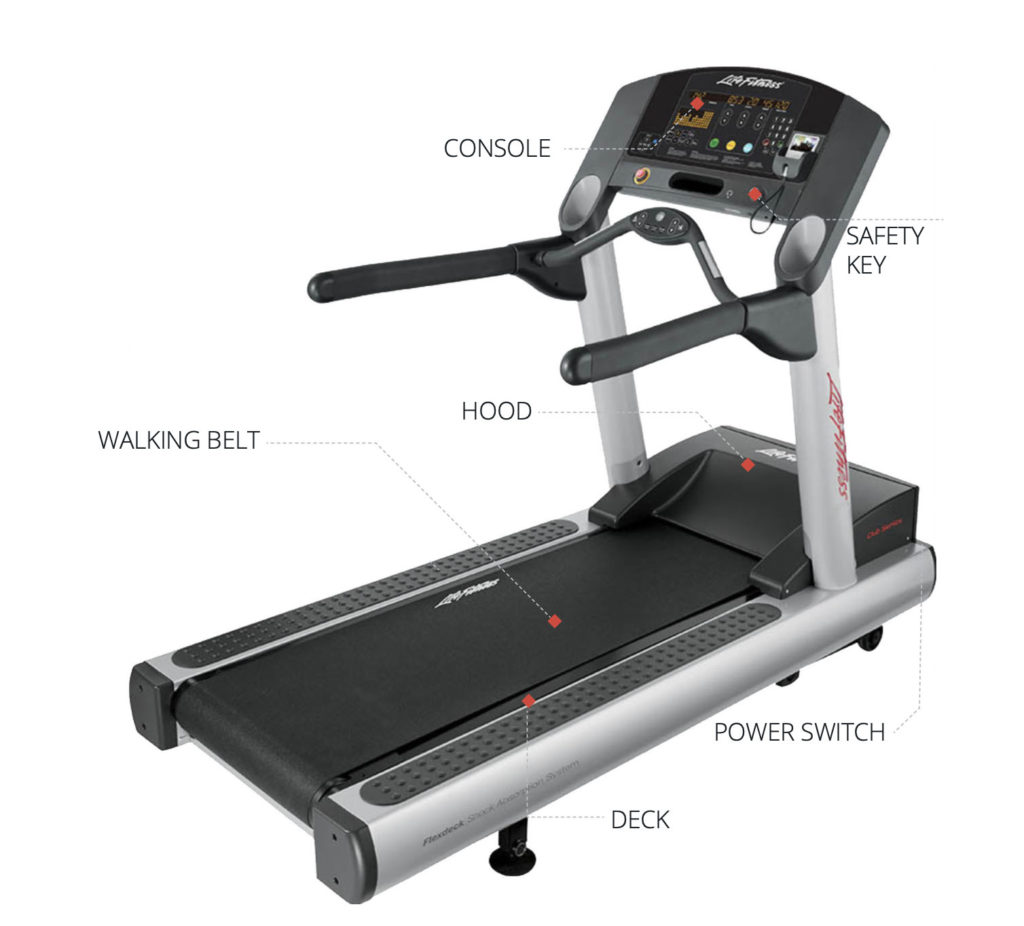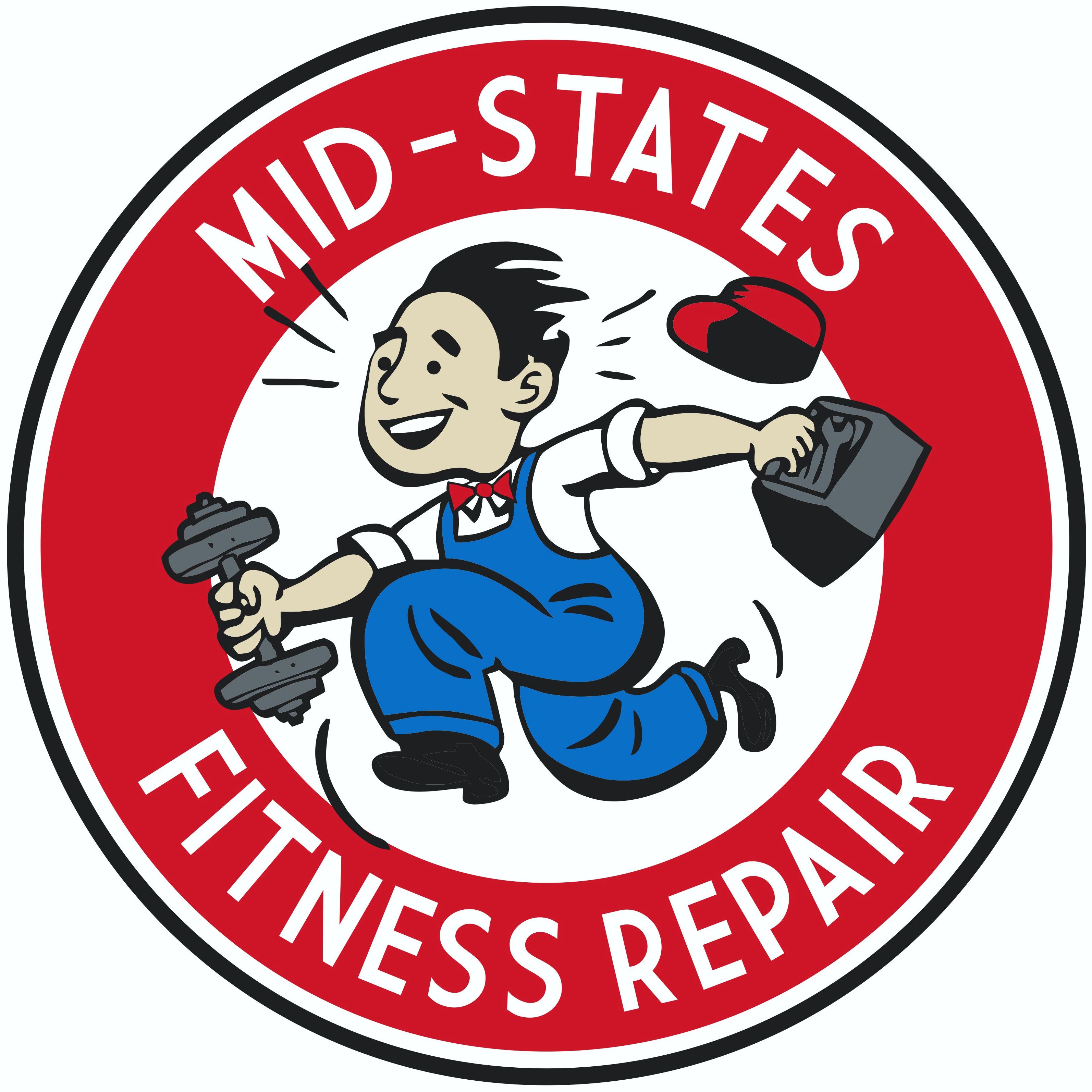A lot of times when technicians are talking to customers they forget that their knowledge isn’t common knowledge. They say stuff like “Your walking belt and deck is worn but the good news is your deck can be flipped!” or “I can quote you a PM.” What exactly does that mean? Well, let’s start with a diagram of a treadmill.

THE CONSOLE
This one is easy. It has buttons to start and stop the treadmill, incline the treadmill up or down, control speed, and may offer exercise program options. The safety key can be found on, or close to the console. For the owner or a technician the console can also show error codes and a history of miles or hours of use of the machine.
THE SAFETY KEY
A safety key is usually a magnetic or insertable key. The key connects to the console and has a small rope and clip that is worn by the user during exercise. When the safety key is connected correctly, it triggers electrical current to flow and activates the treadmill functions, without the key in place the circuit is not complete and will cut power to the motor. The safety key should be worn by users during exercise to help prevent injury.
THE HOOD
The hood is a plastic covering that protects the lower control board, motors, belts, and connecting wires from damage and debris. During a preventive maintenance (PM) our technicians take off the hood of the treadmill to inspect, clean out dust and debris, test motor amperage, and lubricate belts or incline shafts.
POWER SWITCH
The power switch controls the power for the whole machine. It is located on the front towards the bottom of the machine. Sometimes it can be found just under the front of the machine or the side. If you’re looking for a serial number on a treadmill it can sometimes be found close to the power switch.
Like any technology, if you find that you are having issues with your machine first try to power off the machine using the power switch for about a minute and then power the machine back on to let the machine reboot.
THE WALKING BELT
The belt you walk on while exercising is usually referred to as the walking or running belt. Walking belts will need be checked regularly for wear. Some treadmill walking belts will need to be lubricated regularly, and at some point it is likely you will have to replace your walking belt. You can look for when the belt is too worn when the edges of the belt become frayed, ripped, or starts to crack. The most important wear to look for is the hardest to see though. In-between the walking belt and deck is the primary wear area to inspect. This area will deteriorate over time from wear causing higher friction and will lead to more power being required from the control board to move the belt. it can cause the motor or board to fail from the excessive power. Replacing the belt in the earlier stages of wear will significantly extend the life of the treadmill. If your treadmill walking belt becomes too worn it could become dangerous to use.
Certain brand walking belts will need to be lubricated with silicone on a regular basis to ensure the belt does not cause too much friction while sliding across the deck. Consult your owners manual to find out if your equipment needs regular lubrication or is not a serviceable unit.
THE DECK
The deck is the sealed wood MDF board underneath the walking belt. If you want to check the condition of the deck, lift the walking belt as much as possible and and feel under the belt towards the center of the deck. The deck should feel smooth and have no grooves. If the deck is too worn or is not lubricated properly it can cause too much friction and may cause damage to the machine by making it over work.
During a PM our technicians will check the walking belt and deck, and lubricate if required.
WHATS A PM?
Preventive Maintenance.
Our preventative maintenance includes inspection, calibration, lubrication, and cleaning of cardio and strength equipment. A preventive maintenance is meant to increases the lifespan of fitness equipment and limit downtime. Most manufactures recommend preventative maintenances be preformed on a quarterly basis.
